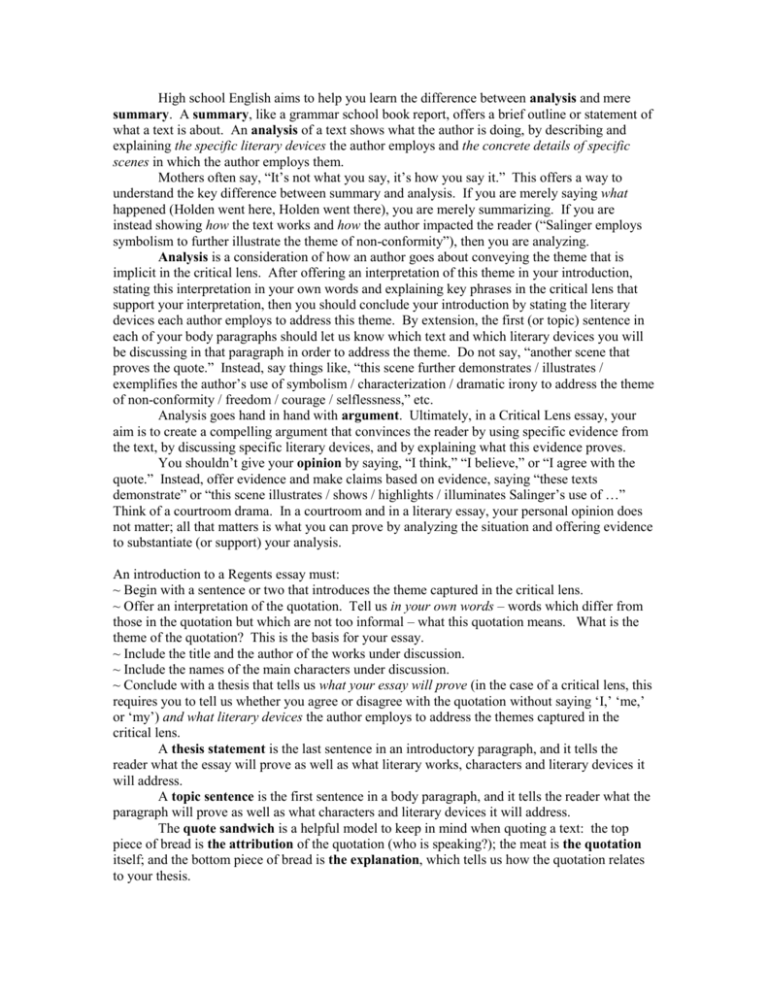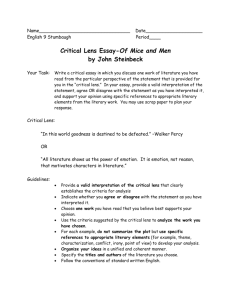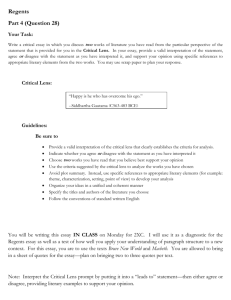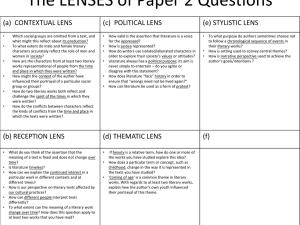GeneralCriticalLensEssaySuggestions
advertisement

High school English aims to help you learn the difference between analysis and mere summary. A summary, like a grammar school book report, offers a brief outline or statement of what a text is about. An analysis of a text shows what the author is doing, by describing and explaining the specific literary devices the author employs and the concrete details of specific scenes in which the author employs them. Mothers often say, “It’s not what you say, it’s how you say it.” This offers a way to understand the key difference between summary and analysis. If you are merely saying what happened (Holden went here, Holden went there), you are merely summarizing. If you are instead showing how the text works and how the author impacted the reader (“Salinger employs symbolism to further illustrate the theme of non-conformity”), then you are analyzing. Analysis is a consideration of how an author goes about conveying the theme that is implicit in the critical lens. After offering an interpretation of this theme in your introduction, stating this interpretation in your own words and explaining key phrases in the critical lens that support your interpretation, then you should conclude your introduction by stating the literary devices each author employs to address this theme. By extension, the first (or topic) sentence in each of your body paragraphs should let us know which text and which literary devices you will be discussing in that paragraph in order to address the theme. Do not say, “another scene that proves the quote.” Instead, say things like, “this scene further demonstrates / illustrates / exemplifies the author’s use of symbolism / characterization / dramatic irony to address the theme of non-conformity / freedom / courage / selflessness,” etc. Analysis goes hand in hand with argument. Ultimately, in a Critical Lens essay, your aim is to create a compelling argument that convinces the reader by using specific evidence from the text, by discussing specific literary devices, and by explaining what this evidence proves. You shouldn’t give your opinion by saying, “I think,” “I believe,” or “I agree with the quote.” Instead, offer evidence and make claims based on evidence, saying “these texts demonstrate” or “this scene illustrates / shows / highlights / illuminates Salinger’s use of …” Think of a courtroom drama. In a courtroom and in a literary essay, your personal opinion does not matter; all that matters is what you can prove by analyzing the situation and offering evidence to substantiate (or support) your analysis. An introduction to a Regents essay must: ~ Begin with a sentence or two that introduces the theme captured in the critical lens. ~ Offer an interpretation of the quotation. Tell us in your own words – words which differ from those in the quotation but which are not too informal – what this quotation means. What is the theme of the quotation? This is the basis for your essay. ~ Include the title and the author of the works under discussion. ~ Include the names of the main characters under discussion. ~ Conclude with a thesis that tells us what your essay will prove (in the case of a critical lens, this requires you to tell us whether you agree or disagree with the quotation without saying ‘I,’ ‘me,’ or ‘my’) and what literary devices the author employs to address the themes captured in the critical lens. A thesis statement is the last sentence in an introductory paragraph, and it tells the reader what the essay will prove as well as what literary works, characters and literary devices it will address. A topic sentence is the first sentence in a body paragraph, and it tells the reader what the paragraph will prove as well as what characters and literary devices it will address. The quote sandwich is a helpful model to keep in mind when quoting a text: the top piece of bread is the attribution of the quotation (who is speaking?); the meat is the quotation itself; and the bottom piece of bread is the explanation, which tells us how the quotation relates to your thesis.









